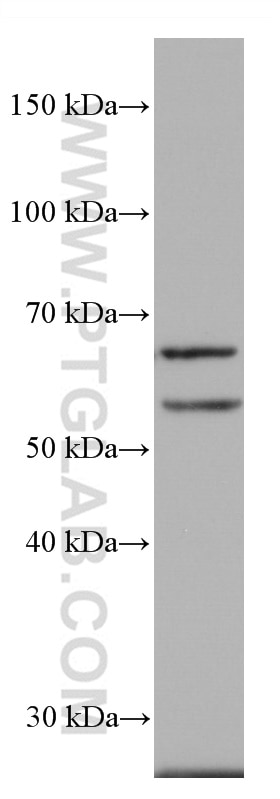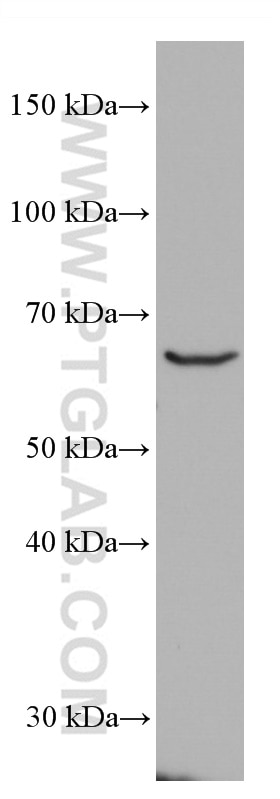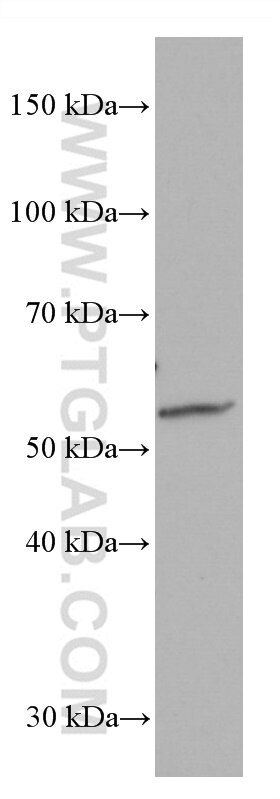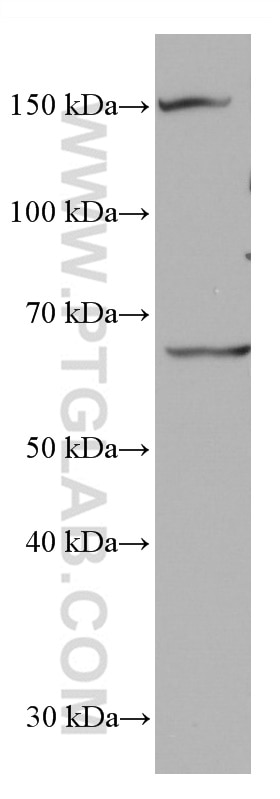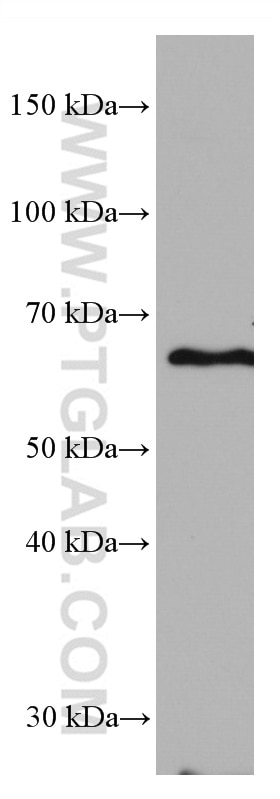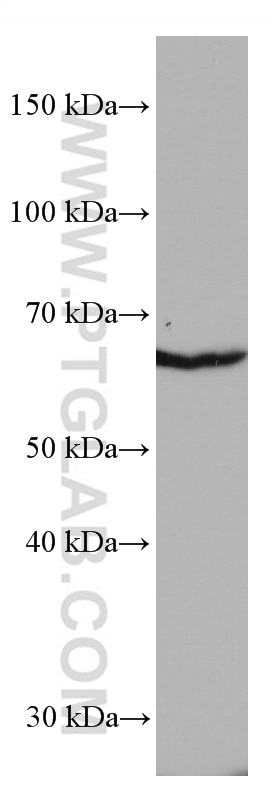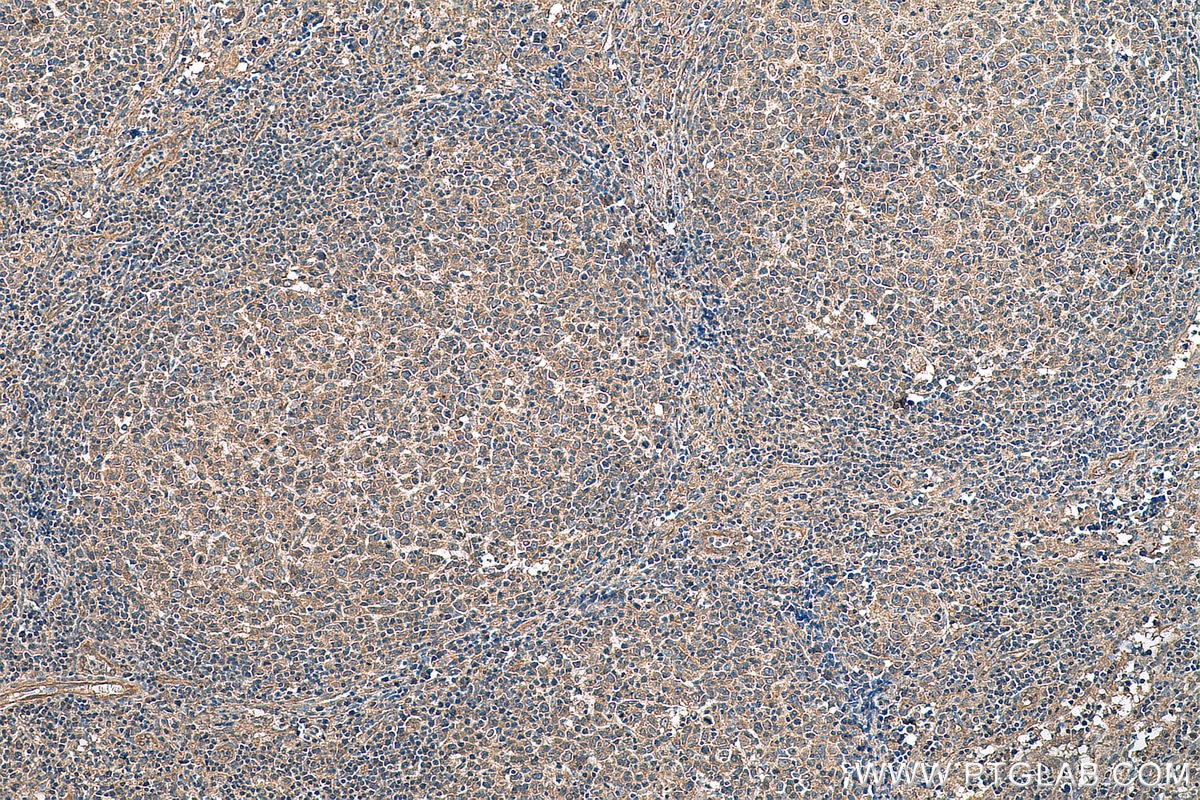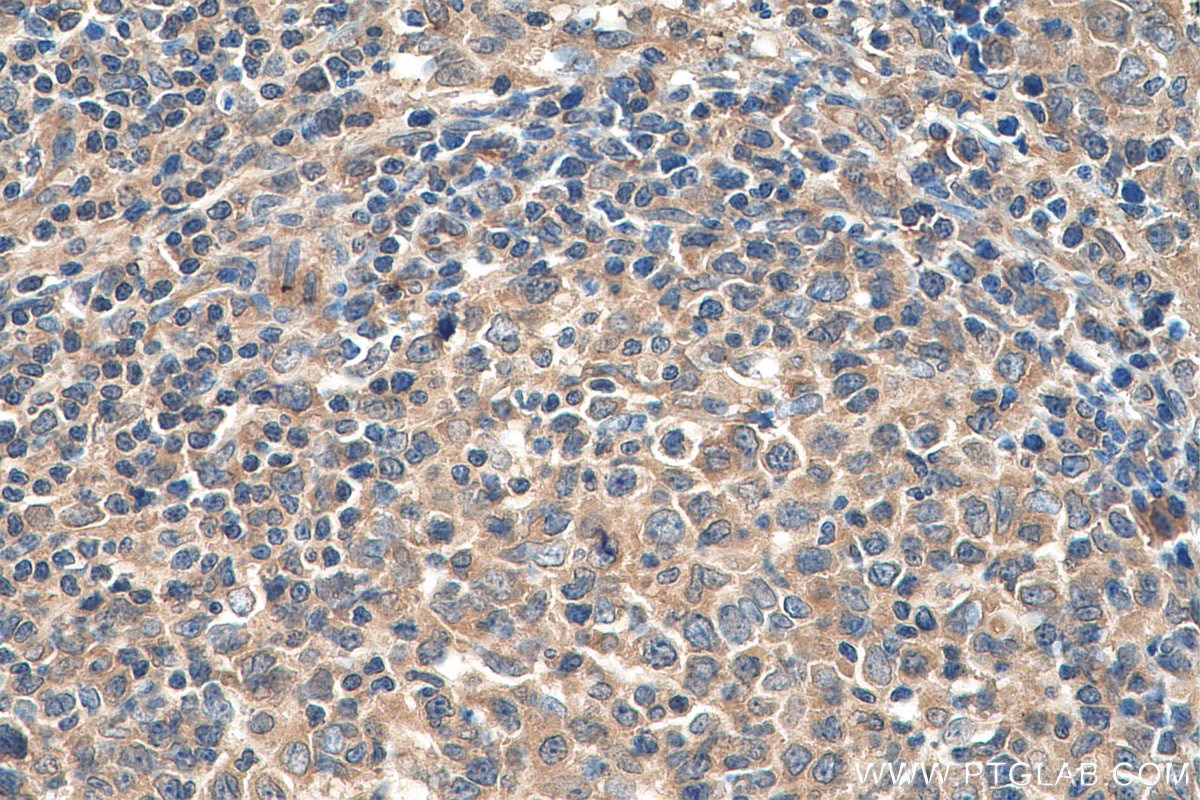Validation Data Gallery
Tested Applications
Recommended dilution
| Application | Dilution |
|---|---|
| It is recommended that this reagent should be titrated in each testing system to obtain optimal results. | |
Product Information
66857-1-PBS targets ACVRL1 in WB, IHC, Indirect ELISA applications and shows reactivity with Human, Mouse samples.
| Tested Reactivity | Human, Mouse |
| Host / Isotype | Mouse / IgG1 |
| Class | Monoclonal |
| Type | Antibody |
| Immunogen | ACVRL1 fusion protein Ag6446 相同性解析による交差性が予測される生物種 |
| Full Name | activin A receptor type II-like 1 |
| Calculated molecular weight | 56 kDa |
| Observed molecular weight | 56 kDa, 63 kDa |
| GenBank accession number | BC042637 |
| Gene Symbol | ACVRL1 |
| Gene ID (NCBI) | 94 |
| RRID | AB_2882196 |
| Conjugate | Unconjugated |
| Form | Liquid |
| Purification Method | Protein G purification |
| UNIPROT ID | P37023 |
| Storage Buffer | PBS only , pH 7.3 |
| Storage Conditions | Store at -80°C. |
Background Information
ACVRL1 (also known as ALK1) is a type I cell-surface receptor for the TGF-beta superfamily of ligands. It shares with other type I receptors a high degree of similarity in serine-threonine kinase subdomains, a glycine- and serine-rich region (called the GS domain) preceding the kinase domain, and a short C-terminal tail. ACVRL1 is highly expressed in endothelial cells and has a critical role in the control of blood vessel development and repair (PMID: 8640225). Mutations in the ACVRL1 gene are associated with hemorrhagic telangiectasia type 2.
